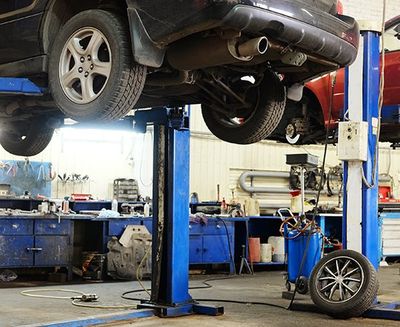An Extensive Technique to Enhancing Performance Through Strategic Lift Fixing Methods
A organized and critical method to raise fixing and upkeep is critical to optimize efficiency and lessen downtime. By resolving usual lift concerns, executing proactive maintenance procedures, and creating targeted repair plans, facilities can enhance their lift systems to run at peak efficiency degrees.
Value of Lift Performance Optimization
Comprehending the relevance of enhancing lift performance is essential for guaranteeing reliable and reputable vertical transportation systems in numerous structures and structures. Lifts are crucial parts of modern-day facilities, giving vertical mobility for residents and items within buildings of differing heights. By optimizing lift efficiency, structure owners and center managers can boost customer experience, improve power efficiency, and boost general functional effectiveness.
Efficient lift efficiency optimization involves various aspects, consisting of rate, capability, power upkeep, safety, and intake requirements. Effectively optimized lifts can minimize wait times for customers, especially in high-traffic structures, leading to improved complete satisfaction and efficiency. Additionally, enhanced lifts add to energy financial savings by making use of innovative control systems and technologies that reduce power intake without endangering efficiency.

Identifying Common Lift Issues
Identifying typical lift concerns is necessary for maintaining the operational efficiency and security of vertical transportation systems in buildings. Acknowledging these concerns can assist stop breakdowns, decrease downtime, and extend the lifespan of the lift equipment. One usual trouble that building managers and upkeep teams frequently experience is irregular or jerky motions throughout procedure. This concern can be a sign of issues with the lift's electric motor, control system, or perhaps the placement of the lift auto.
Another prevalent lift concern is weird sounds rising from the lift shaft or machinery room. These sounds can vary from grinding or scraping audios to loud clunking noises, every one of which may signify underlying mechanical problems that need instant attention. Furthermore, constant door malfunctions, such as doors not opening up or closing correctly, can interfere with the smooth flow of travelers and present safety and security threats.
Applying Positive Upkeep Measures
To optimize the performance and longevity of lift systems, positive upkeep steps play an essential role in guaranteeing functional integrity and security. platform lift dimensions. Executing positive upkeep includes systematically checking, maintenance, and fixing components before they stop working, thus preventing expensive downtime and prospective security threats. Routinely scheduled assessments can aid determine minor concerns prior to they intensify into major troubles, ultimately extending the lifespan of lift systems
One secret aspect of positive upkeep is creating a detailed upkeep schedule based on manufacturer suggestions and sector finest techniques. This schedule needs to lay out jobs such as lubrication, placement checks, and element substitutes at specified periods. Additionally, executing problem surveillance techniques, such as vibration analysis and thermal imaging, can assist find very early indicators of wear or breakdown.
In addition, training upkeep team on proper assessment methods and precautionary maintenance procedures is crucial for the successful application of positive maintenance measures. By cultivating a culture of positive maintenance within an organization, lift systems can operate at peak performance degrees, decreasing disruptions and ensuring the security of customers.
Establishing Targeted Repair Work Plans
Upon examining the maintenance documents and efficiency data, the engineering group can develop targeted repair service strategies to address particular concerns and maximize lift system capability. These repair plans are customized to the recognized problems, guaranteeing advice that resources are concentrated on fixing crucial concerns successfully. By prioritizing fixings based upon their effect on efficiency and safety and security, the targeted repair work plans help lessen downtime and maintenance prices while making best use of the lift system's integrity.
Establishing these plans involves a detailed analysis of the lift system elements, including motors, cords, brakes, and control systems. With this detailed analysis, Learn More the engineering group can identify the source of any type of breakdowns or degradation in performance. This details is then used to create a roadmap for the repair procedure, detailing the required actions, timeline, and resources needed to attend to each problem successfully.
Additionally, targeted fixing plans may include preventative steps to enhance the lift system's longevity and performance. By proactively dealing with prospective issues prior to they escalate, these strategies contribute to the overall efficiency and safety and security of the lift system.
Using Data-Driven Insights
Using the power of data-driven understandings is critical in optimizing lift system performance and maintenance effectiveness. By leveraging information analytics, lift operators can make enlightened choices that result in improved operational effectiveness and price financial savings. With the analysis of historic performance patterns, information and patterns can be determined, making it possible for anticipating upkeep techniques to be applied. These predictive maintenance techniques assist prevent unexpected failures, lower downtime, and extend the lifespan of lift systems.

Verdict
Finally, maximizing lift performance is essential for making certain performance this content and safety and security in structures. By determining typical lift issues, executing aggressive maintenance actions, establishing targeted fixing strategies, and utilizing data-driven insights, organizations can boost performance and decrease downtime. It is essential to take an extensive approach to lift repair work approaches to take full advantage of functional efficiency and guarantee the longevity of lift systems.
By resolving usual lift concerns, implementing proactive maintenance actions, and establishing targeted repair strategies, facilities can enhance their lift systems to operate at peak performance degrees.An additional widespread lift problem is odd sounds emanating from the lift shaft or machinery space.Upon examining the upkeep documents and efficiency data, the engineering group can establish targeted repair work strategies to attend to particular issues and enhance lift system performance. By prioritizing repair work based on their effect on performance and safety and security, the targeted repair strategies aid decrease downtime and maintenance costs while taking full advantage of the lift system's reliability.
It is essential to take a detailed approach to raise repair strategies to make the most of operational effectiveness and make certain the longevity of lift systems.
 Alicia Silverstone Then & Now!
Alicia Silverstone Then & Now! Barret Oliver Then & Now!
Barret Oliver Then & Now! Hailie Jade Scott Mathers Then & Now!
Hailie Jade Scott Mathers Then & Now! Freddie Prinze Jr. Then & Now!
Freddie Prinze Jr. Then & Now! Jaclyn Smith Then & Now!
Jaclyn Smith Then & Now!